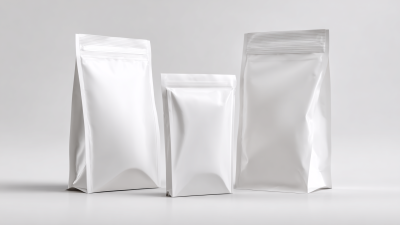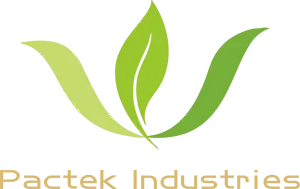Leave Your Message
In today's rapidly evolving packaging landscape, the demand for efficiency and sustainability is more critical than ever. Flat Bottom Pouches have emerged as a versatile solution, combining functionality with aesthetic appeal. According to a report by Smithers Pira, the flexible packaging market is projected to reach $248 billion by 2024, with pouches representing a significant segment of this growth. Flat Bottom Pouches, known for their ability to stand upright and maximize shelf space, contribute to reducing material waste and enhancing product visibility. Furthermore, a study by MarketsandMarkets indicates that flexible packaging can lead to a 30% reduction in packaging waste compared to traditional rigid options. By understanding the impact of Flat Bottom Pouches on packaging efficiency, businesses can make informed choices that not only optimize resource use but also meet the ever-growing consumer demand for sustainable practices.

 Flat bottom pouches represent a significant advancement in flexible packaging, combining functionality with an aesthetically pleasing design. These innovative pouches offer exceptional stability and increased shelf space, making them ideal for retailers looking to enhance product visibility. As the paper bags market evolves, an increasing number of brands are turning to flat bottom pouches, showcasing their versatility across various sectors, including food, cosmetics, and household products.
Flat bottom pouches represent a significant advancement in flexible packaging, combining functionality with an aesthetically pleasing design. These innovative pouches offer exceptional stability and increased shelf space, making them ideal for retailers looking to enhance product visibility. As the paper bags market evolves, an increasing number of brands are turning to flat bottom pouches, showcasing their versatility across various sectors, including food, cosmetics, and household products.
When considering flat bottom pouches, brands can benefit from their unique structure that allows for better merchandising opportunities. Reports indicate that more companies are focusing on high impact branding through such packaging solutions. Consequently, consumer engagement is influenced not only by the product itself but also by how it is presented on the shelves.
Tips: To maximize the effectiveness of flat bottom pouches, ensure that the design aligns with your brand's identity, using bold colors and clear messaging. Additionally, consider integrating eco-friendly materials, as sustainability is becoming a significant consumer preference in the packaging industry. Finally, evaluate the pouch's size and structure to ensure that it meets your product's needs while optimizing storage and shipping efficiency.
Flat bottom pouches have emerged as a popular choice in the packaging industry, and for good reason. Their unique design not only allows them to stand upright on shelves, making them highly visible to consumers, but also maximizes available space during storage and transportation. This efficiency in space utilization can lead to reduced shipping costs, as more products can fit in a single load. Furthermore, the bags can accommodate a variety of shapes and sizes, making them adaptable for different products, from food to non-food items.
Another significant advantage of flat bottom pouches is their enhanced sealability and protection. The structure provides a larger sealing area, which contributes to an improved barrier against moisture, oxygen, and light. This extended shelf life is crucial for maintaining the quality of perishable items, ultimately reducing waste and ensuring customer satisfaction. Additionally, their lightweight nature minimizes material usage, aligning with sustainability efforts while still delivering high performance. As companies strive for efficiency in both production and environmental impact, flat bottom pouches are poised to play a key role in modern packaging solutions.
Flat bottom pouches have emerged as a game changer in the packaging industry, particularly benefiting various sectors such as food and beverage, pharmaceuticals, and personal care. These pouches offer enhanced stability and a larger base, allowing for efficient storage and display on shelves, which is crucial for attracting consumers. As the Stand-Up Pouches Market is projected to reach USD 36.7 million by 2027, it’s clear that industries are investing in this packaging solution to boost their product appeal and operational efficiency.
When considering the switch to flat bottom pouches, businesses should focus on material selection to ensure product protection and extended shelf life. Choosing the right barrier properties can significantly impact the freshness and quality of perishable items. Additionally, incorporating clear windows can enhance visibility, making it easier for customers to see the product before purchasing.
Tips for successful implementation include conducting market research to understand customer preferences and exploring innovative designs that differentiate your product. Collaborating with experienced packaging suppliers can also provide valuable insights into best practices and emerging trends, ultimately leading to a successful transition to flat bottom pouches.

Flat bottom pouches have emerged as a highly effective packaging solution, particularly in addressing sustainability concerns within the industry. According to a report by Smithers Pira, flexible packaging, including flat bottom pouches, can lead to a reduction in material usage by up to 30% compared to rigid alternatives. This lower material consumption not only reduces production costs but also minimizes waste generated during the manufacturing process, aligning with global sustainability goals.
Further emphasizing the environmental advantages, a study published in the Journal of Cleaner Production indicates that flat bottom pouches are often designed with recyclable materials, such as high-density polyethylene (HDPE) and low-density polyethylene (LDPE). These materials are increasingly favored due to their relatively low carbon footprint in production. In fact, the packaging industry is projected to see a shift towards using 70% recyclable materials by 2025. This transition not only enhances the sustainability profile of flat bottom pouches but also encourages responsible disposal and recycling practices among consumers, reinforcing the importance of eco-friendly packaging solutions in today's market.
| Material Type | Impact on Packaging Efficiency | Sustainability Rating | Recyclability | Cost Effectiveness |
|---|---|---|---|---|
| Kraft Paper | High efficiency due to lightweight and strong structure | A | Yes | Moderate |
| PET Plastic | Excellent barrier properties, enhancing durability | B | Yes | Low |
| Aluminum Foil | Optimal for preserving freshness and shelf life | C | No | High |
| Biodegradable Plastics | Moderate efficiency with a focus on environmental impact | A | Yes | Moderate |
| Recycled Paper | Good performance while reducing environmental footprint | B | Yes | Low |
When selecting the right flat bottom pouch for your product, it is crucial to consider several key factors that can significantly enhance packaging efficiency. According to a recent report by Smithers Pira, flexible packaging, including flat bottom pouches, is expected to grow by 4.3% annually, driven by rising consumer demand for convenience and sustainability. This growth emphasizes the importance of careful pouch selection to meet market expectations.
One key tip is to assess the barrier properties of the pouch material. Different products require distinct levels of protection against moisture, oxygen, and light. For example, foods with high-fat content may benefit from specialized laminates that prevent rancidity. Another critical consideration is the size and volume of the pouch — ensuring the dimensions align with the product will minimize waste and optimize shelf space. A study from the Flexible Packaging Association indicates that the right pouch size can enhance shelf appeal by up to 35%, a vital factor for attracting consumers.
Lastly, consider your branding needs. Flat bottom pouches provide ample surface area for high-quality graphics and information, which can increase product visibility. A well-designed pouch not only captures attention but also communicates brand values effectively. By focusing on these aspects, you can ensure that your flat bottom pouch not only meets functional requirements but also resonates with your target market.






